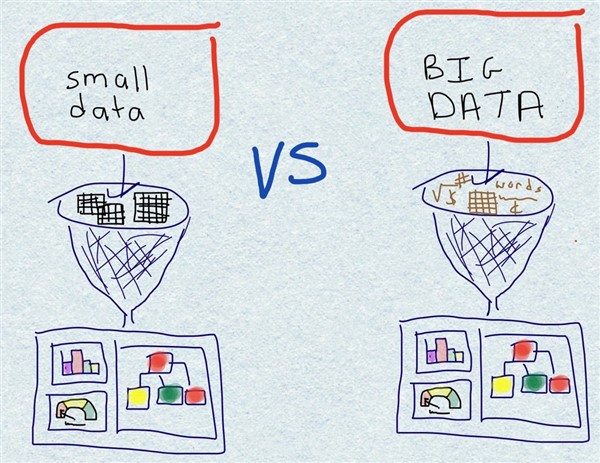What is Small Data?
Small data is data in a format and volume that is accessible, informative and actionable. Small data is small enough to be comprehended by humans. According to a formal definition of small data proposed by Allen Bonde, VP of Innovation at Actuate, “Small data connects people with timely, meaningful insights (derived from big data and/or local sources), organized and packaged – often visually – to be accessible, understandable, and actionable for everyday tasks.”
For whom is Small Data?

Small Data. Image source c3integrity.com
Small data is for any business organisation or enterprise that requires information to solve specific issues. Big Data has turned out to be the new-age business mantra and it has brought about significant changes in the business world. Business organisations from across the world have accepted that Big Data is valuable for increasing their growth. But there are countless business organisations that lack the staff or resources needed to derive the advantage of Big Data. For such organisations small data is the answer.
How Small Data differs from Big Data?

Big Data Vs Small Data. Image source beautifulinsanity.com
Small data offers information that addresses particular questions or problems. While Big Data consists of structured and unstructured data, small data comprises of few pieces of information. Big Data is characterised by the 3Vs, namely, volume of data, variety of data types and velocity of data processing. The combination of these 3Vs makes Big Data very challenging to manage. Small data is characterised by organized and packaged chunks of data that can be easily managed.
What does Small Data look like?
In simple terms we can say that small data is the information that an organisation accumulates about its customers. Examples of small data include inventory report, search history and sales data.
For instance, an organisation might want to know certain details about one of its customers: How frequently does the customer visit the organisation’s site? How much time does she generally spend on the site? What are her most common buys? What are the things she searches for while on the site? Data that provides answers to such questions are enough to drive results for the organisation. Based on the results to the above questions the organisation will have a good idea about the budget and the buying patterns of the customer. This will help the organisation to know the customer better and provide improved service.
Advantage of Small Data
Small data comprises of small data sets that do not require machine learning. For an organisation, simple actions like tracking and segmenting of data can yield high results. The organisation can categorize products and create pages based on behaviours activated during log-in. Of course, such if-then situations can be activated by Big Data. But such situations respond to small data in a better manner.
For medium sized enterprises the challenge lies in discovering the few key attributes that are responsible for increasing predictability in their marketing. These key attributes, regardless of being two or twenty in number, can be used by the enterprises to enhance personalization and responses to their existing list of customers. They can also be used to attract first-time visitors. Here the fact to note is that all these can be achieved without the help of Big Data. The enterprises can avoid investing heavily in Big Data and hiring expert Big Data professionals in order to derive such results. All they need to do is exploit the data that is readily available to them, i.e. small data and reap in the benefits.
Future of Small Data
Small data is enough to solve a lot of specific requirements of business organisations. The small chunks of decentralized data offers real value to enterprises. From the data related to household expenses to government funding for public colleges, everything we deal with on a daily basis comprises of small data. Even when the need arises to scale up, the small data packages can be integrated to attain the desired results. This brings us to the conclusion that small data is here to stay and the future looks bright for small data.
The post What is Small Data? appeared first on BPMwatch.com.
Leave a Comment
You must be logged in to post a comment.







